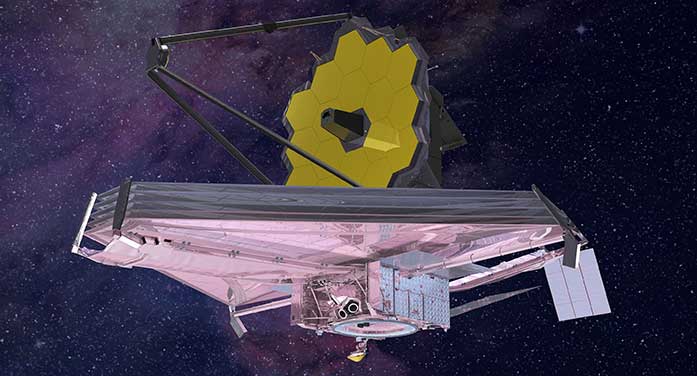As the James Webb Space Telescope reaches its destination, a million miles from Earth, University of Alberta space historian Robert Smith will be watching almost as closely as scientists in NASA’s control room.
Smith has staked his career on documenting every phase of the Webb and Hubble telescopes over the past four decades and is recognized as the on-the-scene historian of these enormously complex collaborations among thousands of scientists at NASA, the European Space Agency and the Canadian Space Agency.
The Webb is the most complex scientific spacecraft ever launched, said Smith. It’s an example of what he calls “mega-science,” and also the biggest gamble in space science history.
The successor to the Hubble Space Telescope promises to peer deeper into space than ever before, catching light from 200 million years after the Big Bang. When you consider the event itself happened about 13.8 billion years ago, that’s spectacularly close to the birth of the universe.
Smith predicts that when the Webb starts sending photos back to Earth, the images will fuel the popular imagination on a grand scale and become part of mass culture, as did the Hubble.
“Hubble images are everywhere and have created a link with the general public,” he said. “They’ve been on the front of newspapers, TV, news and all the rest of it.”
Despite the telescope’s complexity, Smith expects things to go smoothly.
When the Hubble first deployed its mirror after launching in April of 1990, a slight aberration measuring about one-fiftieth the width of a human hair caused the telescope’s photos to come back blurry. The repairs couldn’t happen until the next shuttle mission three years later.
This time fixing the Webb telescope isn’t an option. It will be far too distant to reach, so everything must work perfectly, said Smith.
“Now that it’s launched, things have really been going surprisingly smoothly,” he said.
Two weeks ago, scientists in NASA’s control room breathed a heavy sigh of relief when the telescope unfolded its 18-piece mirror without a hitch after successfully launching on Christmas Day.
“You’ve got people on this project who have been working on it since the ’90s. They’ve invested a hefty chunk of their careers in this. … I will be very surprised if we hear about anything like what happened with the Hubble.”
The Webb was supposed to launch in 2009 for a total cost of between $1 billion and $3.5 billion but, after a series of delays, the cost has inflated to $11 billion.
Smith has followed the project for 22 years, from inception to the transmission of its first photos from space, expected in May. Over the years, he has interviewed key players, attended project meetings with astronomers and engineers, and carefully examined planning documents.
His first book on large-scale science, The Space Telescope: A Study of NASA, Science, Technology, and Politics, was a groundbreaking contribution to space history and a New York Times Notable Book of 1989. It exposed how complicated, fiercely political and ultimately flawed big science can be.
His next book – and likely his last on a space telescope, he said, given the enormous scale of such projects – is a history of the Webb, which Smith will release next year. The book covers everything from unexpected technical headaches to the politics of international collaboration.
Canada is one of the countries with a key investment in the Webb, Smith noted. The Canadian Space Agency came up with the telescope’s guiding system. It also designed an instrument – called a near-infrared imager and slitless spectrograph – to examine planets beyond our solar system, searching for gases like oxygen and methane that could suggest the presence of life.
Those contributions mean Canada will be entitled to five per cent of the telescope’s observation time, making Canadian scientists among the first to observe its data.
Once the Webb begins transmitting photos, Smith plans to quickly wrap up his own project, putting the final touches on his book next fall for publication the following year. So far he has no publisher, but given his stellar record in space science, he doesn’t see that as a problem.
“I thought it’d be more interesting this time to actually have some scientific results that I can talk about and assess how well things are going.”
| By Geoff McMaster
Submitted by the University of Alberta’s Folio online magazine. The University of Alberta is a Troy Media Editorial Content Provider Partner.
© Troy Media
Troy Media is an editorial content provider to media outlets and its own hosted community news outlets across Canada.


